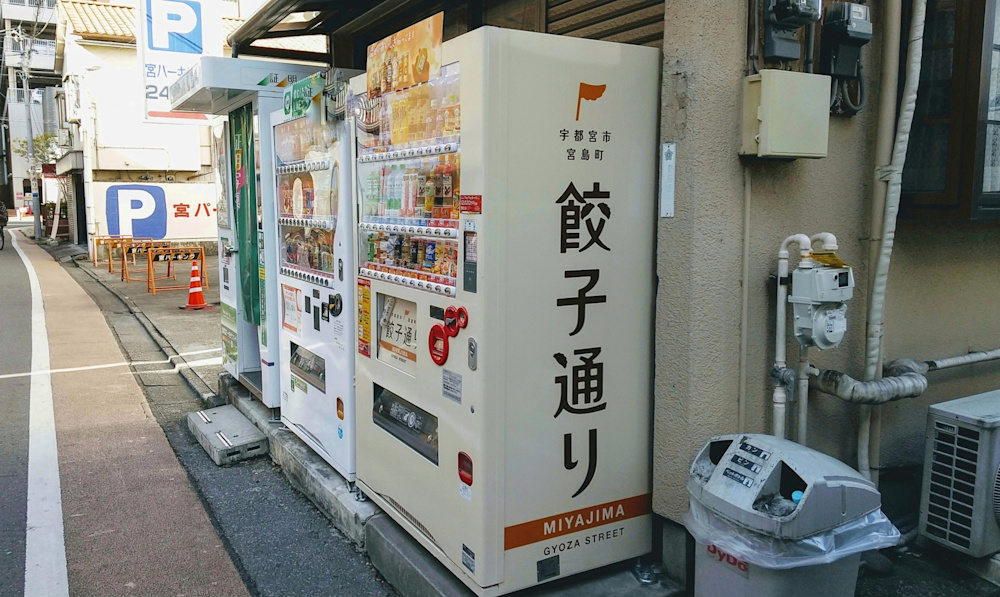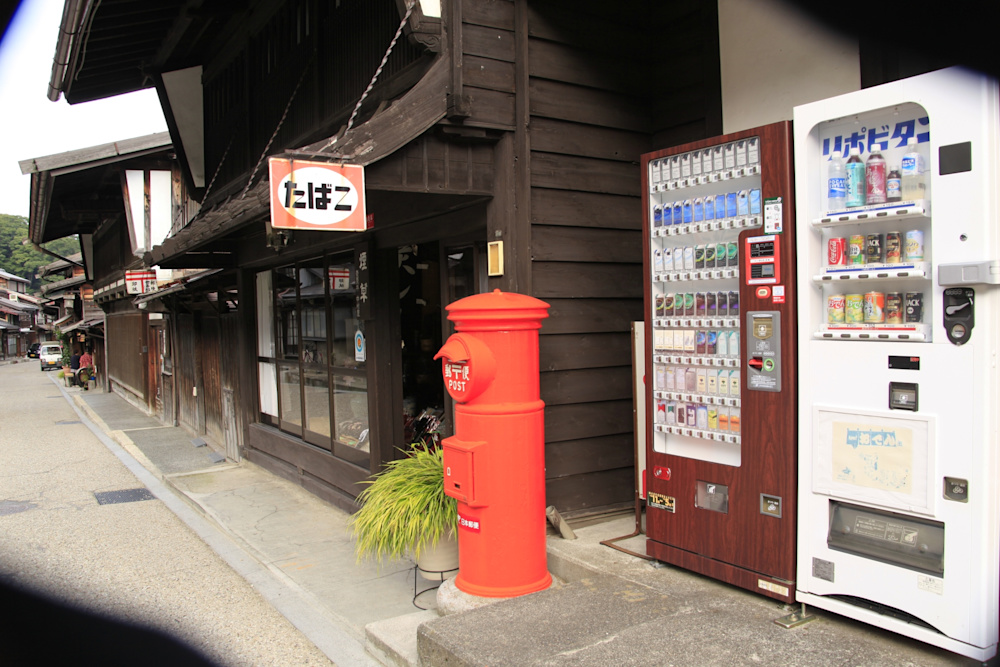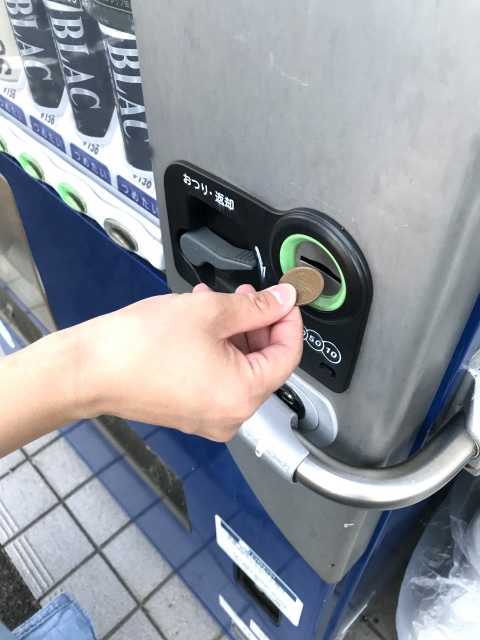Updated October 21, 2025
Vending Machines in Japan: Everything You've Always Wondered (and More)
Walk through any Japanese city or rural area, and you'll quickly notice these colorful vending machines on practically every corner.
In Japan, vending machines are an integral part of daily life. You may have noticed that they’re quite abundant, but do you know exactly how many types of vending machines are in Japan?
Japan operates over 2.6 million vending machines for its 125 million residents. That breaks down to roughly one machine for every 30-40 people, a ratio that dwarfs every other country on Earth.
This guide covers everything you need to know about Japanese vending machines, from their history to what types are available today and how to use one.
Let’s kick things off with some history.
In this article: 📝
The History Behind Japan's Vending Machine Culture
Japan's vending machine story goes back to 1904, when inventor Koshichi Tawaraya patented the country's first automated dispenser.
Unlike modern beverage machines, this early innovation sold tobacco using a simple coin-operated mechanism. But Tawaraya didn't stop there. He developed additional machines for stamps, postcards, and even sake.
After a dormant period of no vending machine-related developments, the real transformation came in the 1960s, when international companies like Coca-Cola introduced beverage vending machines.
In Japan, the trend caught on in the 1970s with the introduction of dual-temperature machines capable of dispensing both hot and cold drinks from the same unit. This engineering feat made vending machines practical year-round in Japan's diverse climate.
Japan's post-war economic situation also helped these machines spread everywhere. During the 1940s rebuilding period, vending machines provided quick access to essential goods while keeping operational costs low for businesses, which turned out to be quite a sustainable business model as they’re still popular to this day.
Vending Machine Japanese Word: Jidōhanbaiki and Jihanki
Since we’re taking a deep dive into Japanese vending machines, let’s answer one very important question: What are vending machines called in Japan?
The formal word for vending machine is 自動販売機 (jidōhanbaiki), which literally means "automatic selling machine."
In everyday conversation, Japanese people use the shortened 自販機 (jihanki), which you'll see written in hiragana as “じはんき” on signs and maps throughout Japan.
Adding this term to your basic Japanese vocabulary is handy, especially in rural areas with little English signage, when you’re hunting for a quick snack or drink.
Why Vending Machines Flourished in Japan
Yes, Japan has a lot of vending machines, but why?
It might seem like an extension of the country’s culture of practicality and history of efficient tech integration, but several unique factors go into Japan's extraordinary vending machine density compared to other countries.
Safety and security: Japan's remarkably low crime rate enables unmanned machines to operate safely 24/7. Vandalism and theft rates are so minimal that businesses can place expensive equipment on street corners without significant security concerns.
Economic efficiency: Japan's high real estate costs make vending machines economically attractive. They occupy minimal space while serving dense urban populations who value speed and convenience. Rising labor costs and population age make these machines all the more practical.
Cultural acceptance: Japanese society values efficiency and tends to embrace technological solutions to daily problems. People here don't see vending machines as impersonal but as convenient tools that save time.
Geographic factors: Japan's climate swings from humid 30°C+ summers to snowy winters below freezing. This creates consistent demand for both hot and cold beverages throughout the year, making vending machines consistently profitable.

Vending Machine Etiquette in Japan
Using vending machines in Japan comes with some unwritten social rules that tourists often miss. Following these rules can make you feel more at home and respect local customs:
Be quick: Avoid blocking machines during busy periods. Make your selection quickly and step aside to allow others access. Japanese culture values group harmony and efficiency.
Stay put while eating/drinking: It's acceptable to drink purchases while standing near the vending machine, especially during summer when you'll see groups socializing around these machines. However, walking while eating or drinking is generally discouraged in Japanese culture.
Use the recycling system: Most machines include dedicated recycling bins for containers purchased from that specific machine. Be sure to separate aluminum cans, plastic bottles, and glass containers according to clearly marked compartments.
The Numbers: How Many Vending Machines in Japan Are There?
As we mentioned in our intro, Japan has over 2,6 million vending machines. According to the Japan Vending System Manufacturers Association, here are the official statistics as of December 2024:
Type of Model |
Product Examples |
Number of Vending Machines |
Compared to the Previous Year (%) |
Beverage Vending Machine |
Soft drinks (canned and bottled) |
1,976,200 |
99.9 |
Dairy beverages (paper cartons) |
90,000 |
92.3 |
|
Coffee and cocoa (paper cup) |
115,100 |
92.4 |
|
Liquor and beer |
18,300 |
94.8 |
|
Beverage Subtotal |
2,199,600 |
99.1 |
|
Food Vending Machine |
Instant noodles, frozen foods, ice cream, confectionery, etc. |
81,200 |
100.2 |
Cigarette Vending Machine |
Cigarettes |
65,900 |
87.5 |
Ticket Vending Machine |
Passenger tickets |
14,000 |
99.3 |
Meal tickets, admission tickets, etc. |
49,500 |
100.0 |
|
Subtotal of Tickets |
63,500 |
99.8 |
|
Daily necessities vending machine |
Cards, hygiene products, newspapers, toys, etc. |
204,200 |
101.4 |
Vending Machine Total |
2,614,400 |
99.0 |
To put this in perspective, if all of Japan's vending machines were lined up end-to-end, they would stretch thousands of kilometers.
What Kind of Vending Machines Are in Japan?
Japan's vending machine variety extends far beyond your typical expectations. So, if you’re asking “What can you buy from vending machines in Japan?” here's what to expect.
Beverage Vending Machines
Beverage machines dominate Japan's vending machine market and offer all kinds of temperature varieties.
Most machines feature dual-temperature systems, clearly marked with red labels (あったか~い) for hot drinks and blue labels (つめた~い) for cold options. Some advanced models even offer room-temperature drinks, which are considered healthier in Japanese culture.
Summer brings the heat and the frozen beverages, including "subzero sodas" that turn into slushies when opened, while winter features warming options like sweet red bean soup (oshiruko) and corn potage soup. Depending on the region, you’ll also find some local specialties such as Hokkaido milk varieties and local fruit juices.
Since Japan pioneered canned coffee in the 1970s, today you'll also find brands like Boss, Georgia, and UCC offering everything from black coffee to café au lait.
Some premium machines even grind beans fresh and serve coffee in cups rather than cans.
Keep in mind that hot drinks are mostly available from October through March, so they might not be as easy to find during the summer months.
Hot Food Vending Machines
These automated restaurants serve complete meals heated to regulatory temperatures (typically 60°C) within minutes. They're equipped with heating elements, refrigeration systems, and even robotic arms for preparing the food.
The menus offer the usual suspects: ramen, curry rice, fried rice, soba noodles, hamburgers, but may also feature premium items like Wagyu beef. Some machines specialize in regional cuisine, like the Osaka machines that offer takoyaki-flavored items, or Hokkaido ones that feature local seafood.
Modern machines by companies like Fuji Electric can also customize orders, adjust ingredients, and deliver the freshest food you can get from a vending machine. Some high-tech versions like Yokai Express even function as "cooking robots" and offer restaurant-quality ramen from famous chains like Ippudo.
These vending machines are most commonly found in business districts, university campuses, and roadside stations. Many include utensils, and the food can be consumed on-site, with sometimes even seating areas available.
Regional Specialty Machines
Japan's diverse local cultures and unique souvenirs are also showcased in local specialty vending machines.
For instance, you’ll find geographic specialties like the momiji manju (maple leaf-shaped cakes) offered in Hiroshima. In Kyoto, sweets featuring matcha and traditional crafts are worth trying, while Hokkaido machines stock local dairy products and canned jingisukan (grilled lamb).
Of course, Tokyo Station has lots of machines with regional treats like Tokyo Banana and limited-edition cookies.
Additionally, many regional machines also rotate inventory based on local festivals and seasonal ingredients. Spring brings sakura-flavored items, while autumn features specialty items made with local harvests.
Novelty and Cultural Experience Machines
These unique machines capture Japan’s playful and tech-savvy spirit. Here’s what you can expect to see around the country:
Cultural items: Temple-style machines sell omikuji (fortune papers), while some locations offer traditional crafts and seasonal festival items.
Entertainment options: Mystery book machines with paper-wrapped novels make for magical reading experiences, while lottery-style machines offer various prize categories.
Collector items: Anime merchandise machines in areas like Akihabara feature exclusive figurines, character goods, and limited-edition items highly sought by collectors.
Out-of-the-box ideas: Some machines feature celebrity endorsements, character themes, or even talking functions, like the Akechi Mitsuhide machine in Fukuchiyama that sings historical songs.
Beyond their novelty value, these machines often offer products at lower prices than souvenir shops, which makes them budget-friendly sources for unique gifts.

Fresh Produce and Perishables Machines
Japan's vending machines sell surprisingly fresh items, without compromising quality.
In rural areas, farmer-operated machines sell fresh eggs (for as little as ¥180 for 10), seasonal vegetables, and locally-produced rice.
But some cities may also surprise you with fresh produce machines. Shibuya Station's famous Dole banana machines restock daily for commuters, while some locations offer fresh-cut fruits with honey.
Finally, you can also find more unique offerings like dashi broth with a whole flying fish, or premium honey varieties.
Emergency and Disaster Response Machines
Japan's disaster preparedness extends even to vending machines, with special units designed for emergency situations.
Disaster-relief machines: Machines in evacuation areas automatically unlock during earthquakes or emergency orders, dispensing free food and drinks. Some include emergency supplies like masks and portable toilets.
Emergency power sources: Solar-powered and hand-crank-operated machines continue functioning during blackouts, providing essential services when infrastructure fails.
Everyday essentials: Emergency items like umbrellas, phone chargers, and hygiene products are often offered in specialty vending machines.
These are usually located near schools, community centers, and transportation hubs to maximize access during actual emergencies.
Where to Find Vending Machines in Japan
Japanese vending machines appear in all sorts of convenient and unexpected locations.
They're ubiquitous in urban areas, of course, usually found on street corners, in and around train stations, office buildings, and residential neighborhoods. However, they’re equally common in rural settings, around mountain hiking trails, hot spring resorts, and even at Mount Fuji's summit.
Train stations offer a particularly great spot for vending machine variety, often featuring regional specialties and limited-time products. Hotels, schools, hospitals, and convenience store areas also typically cluster multiple machines offering all kinds of convenient products.
Payment Methods for Vending Machines
Cash still remains universally accepted in Japan. Most machines take 10, 50, 100, and 500 yen coins as well as 1,000 yen bills. Newer models often accept larger denominations, though change availability varies by location.
In addition to cash, you can also pay using:
IC Card Payments: Suica, PASMO, and regional IC cards offer tap-and-go functionality that's faster than cash transactions.
Digital Payment Methods: QR code systems like PayPay and Rakuten Pay appear on newer machines, and some accept international options like Apple Pay and Google Pay. Understanding cashless payment in Japan can help you maximize your savings.
Point Card: Many station-based machines accept JRE points, while other locations integrate with Japan's point card systems for redemption opportunities.
Areas with high machine concentrations often provide coin exchange machines that break larger bills into appropriate denominations, so don’t worry about getting stuck without the correct amount of change.
Conclusion: How Many Vending Machines in Japan Are There?

Japan's 2.6 million vending machines reflect Japanese values like efficiency, community trust, and technological adoption.
From humble beginnings with Tawaraya's 1904 simple tobacco machine to today's private chef-like machines, the jihanki have evolved into an essential infrastructure supporting daily life for millions of people here.
But vending machines represent just one part of Japan's convenience culture. The country's konbini (convenience stores) offer an equally fascinating look at how Japan approaches making life easier for busy people. Together, these systems create a level of daily convenience that's hard to find anywhere else in the world.
Get Job Alerts
Sign up for our newsletter to get hand-picked tech jobs in Japan – straight to your inbox.







